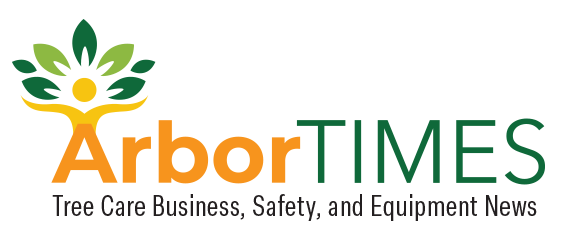Buyers’ Guide: Miniloaders
Everything you need to know about this tree care workhorse
Este es nuestro intento de convertir las historias en audio español usando Inteligencia Artificial. Aún así le recomendamos que reconfirme ciertas palabras clave y temas. ArborTIMES no garantiza ni se responsabiliza de la conversión del inglés al español de los relatos.
Light, strong, and maneuverable, these nimble machines are a worthy addition to your equipment lineup. With interchangeable attachments, versatile miniloaders can save time, money, and effort.
The small but mighty miniloader is relatively new to the U.S. tree care industry, but it is fast becoming the go-to machinery for arborists.
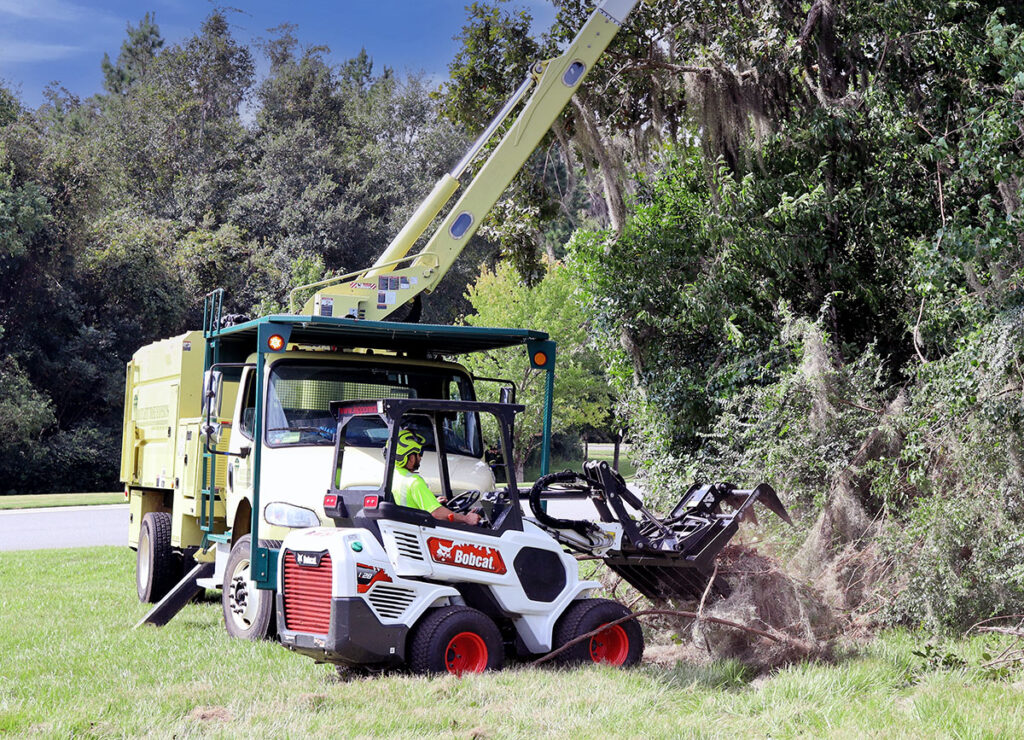
Shorthand for mini articulating wheel loaders, miniloaders are characterized by their relatively small size, their use of wheels instead of tracks, and an articulation system that allows them to maneuver in small spaces. These features make it ideal for safely working on turf and lawns, such as residential backyards.
“Tree care guys have come to find out that a mini articulating loader is really the ultimate tool, because it doesn’t cause any turf damage while performing the same tasks as other machines,” says Chris Sleurink of Miniloaders.com. “And on top of that, these machines often have a telescopic boom, which allows you to push, pull, or pick up materials over a fence.”

Ready to buy a miniloader? Here’s what you need to know about this tree care workhorse.
History
Miniloaders were first widely adopted in Europe in the 1990s. Although several companies sold them in the U.S., they didn’t really take off until 2012, when Finnish manufacturer Avant Tecno set up a headquarters in Chicago.
“The compact articulated loader is lighter and simultaneously stronger than most comparable horse-powered track machines or skid steers,” says David Font, CEO of DFD Loaders. “Visibility is greater. It’s safer. The noise level is much lower. It’s a much easier, more intuitive machine to operate.”

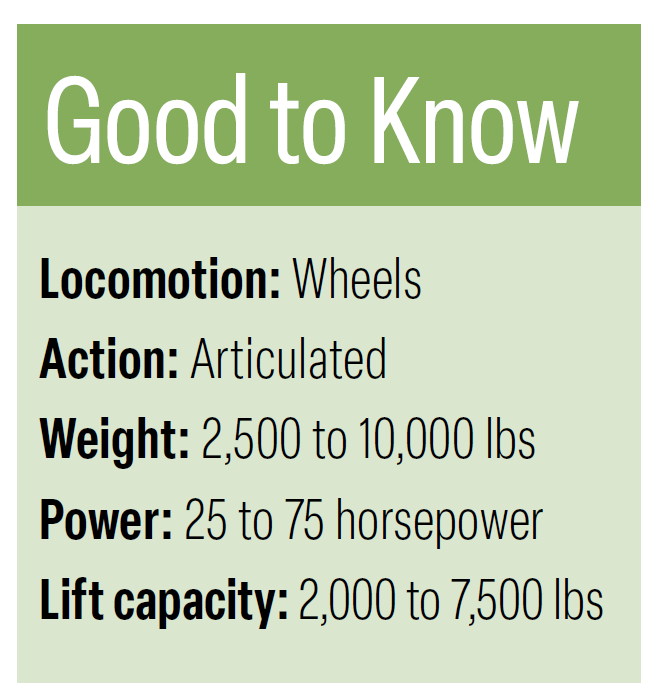
Miniloaders are tree care workhorses because they are small, maneuverable, and wheeled. They tend to have 25 to 75 horsepower and weigh 2,500 to 10,000 pounds — small compared to other machines involved in tree care. Yet they can typically lift up to their own weight without tipping, making them a powerful option for intensive tree care work.
“When it comes to the tree care industry, miniloaders can easily handle all of the ‘back-breaking work’ that normally requires several ground personnel,” says Kyler Foster, sales representative and equipment manager for Vermeer North Atlantic.
Rudolf de Jong, president of Giant Loaders, agrees. “[These] small machines have massive lifting capacities as well as the ability to outwork almost anyone. I’m not sure if the term ‘miniloader’ is really explaining the capability of compact equipment like this.”

A miniloader’s wheels replace the tracks typical of skid steers, which tend to rip up grass and plants and require expensive remediation. The machine’s articulation means it can turn tightly and navigate relatively small spaces to access trees.
“These are primarily used for a small application of getting into backyards,” says Logan Yuncker, inside sales coordinator of tree care products at Morbark. “A lot of people [in tree care] use full-sized skid steers, but those won’t be able to get through a gate.”
These characteristics make miniloaders ideal for residential and commercial job sites, where they can quickly clear away branches, debris, and woodchips and transport them to a waiting chipper or trailer.

Because miniloaders are so useful for arborists, they often come with a telescoping boom that can hold a multi-purpose (knock-around) grapple.
There are two categories of miniloaders: cab-front and cab-rear. In a cab-front, the operator sits on the front of the machine, ahead of the articulation. In a cab-rear construction, the operator sits on the back on top of the engine, similar to a traditional payloader.
Brands tend to sell either one or the other type. For example, Avant’s machines are exclusively cab-front, while Miniloader.com’s are all cab-rear.

Finding ‘The One’
For many tree care companies, adding a miniloader to their fleet is a no brainer when it comes to saving time and opening new revenue streams.
“These compact articulating loaders will virtually haul out entire tree removal jobs without causing any sort of turf damage,” said Dustin Breiwick, owner of TNE Distributing, an equipment supplier in Minnesota. “We believe that tree care businesses are losing money by not having an articulating loader as part of their fleet.”
Before you go shopping, make sure you know how you’re going to use it in your operations.
“It’s better to consider four things when considering which loader best fits your operation: size, power, machine features and attachment options,” says Foster.
Here are a few things to consider when buying a miniloader.
Size There’s a miniloader for every job and location. A smaller size usually works best in tight, urban areas, while suburban or rural areas can handle larger sizes. In general, 3,000 pounds and 25 horsepower are the most common size and power for miniloaders in tree care work, according to Sleurink.
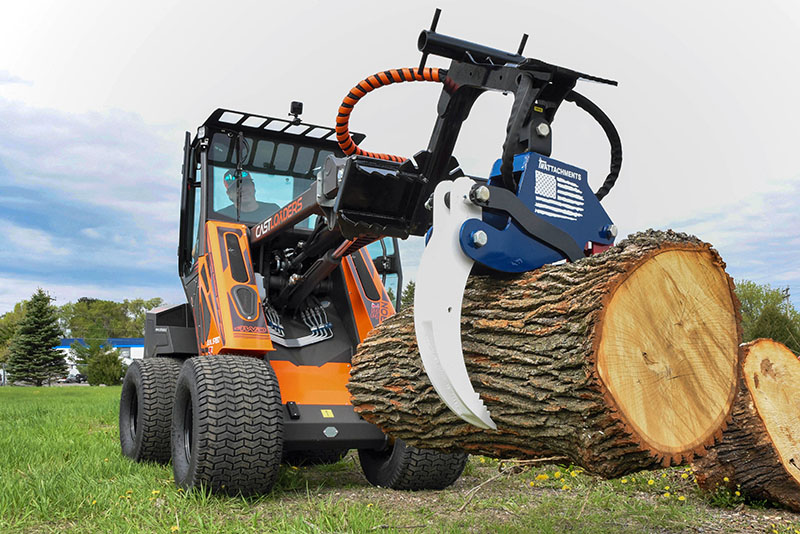
Width While the width of a wheel loader matters, a narrow profile is an advantage for miniloaders by allowing them to navigate through gates and passageways.
Miniloaders.com offers miniloaders with eight wheels, four of which can be temporarily removed to make the machine even narrower. The company’s Intrepid KM85 model is unique in the industry for being able to fit through a 36-inch gate.
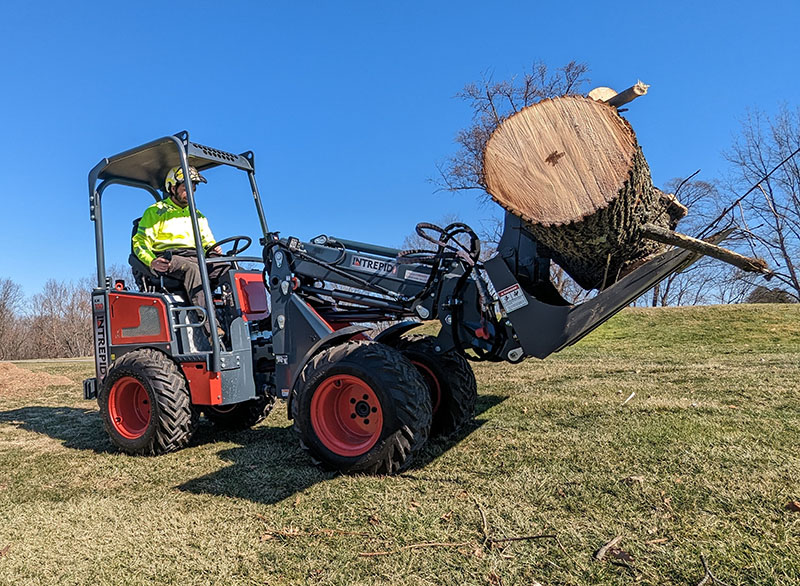
“That’s big for guys who do a lot of urban tree care,” says Sleurink.
Lift capacity It’s important to consider how much weight a miniloader can heft without falling over. The ideal weight-to-lift ratio is 1:1, meaning the miniloader can lift its own weight off the ground. But not all miniloaders can reach this standard. Depending on its weight and width, a miniloader can typically lift 2,000 to 7,500 pounds.
Cab position Proponents of cab-rear miniloaders say this design reduces tail-swing and provides better visibility. They also appreciate that cab-rear miniloaders tend to be made of solid steel. Cab-front models usually have plastic or thin metal coverings to accommodate the operator.
Attachments Miniloaders often come with attachments, such as the standard or telescoping booms that are commonly used by tree care companies. Consider a miniloader with a universal mount that will allow a range of attachments from different manufacturers.

Maintenance In general, miniloaders require low-cost, regular maintenance that a competent mechanic can handle. Look for models that are easy to work on yourself and for which parts are readily available. Brands that have a large distributor network will have better accessibility to resources for maintenance, repair, and parts.
Transport One reason miniloaders are so popular is because of the ongoing shortage of commercial truck drivers. Tree care companies can sidestep the need to find one if their miniloader is small enough to be carried on a truck that does not require a commercial driver’s license.
“I want as small of a machine as possibleso I can go down the road without getting a ticket for having the wrong license,” says Font.
Groundspeed Speed is important, especially when miniloaders are tasked with taking multiple trips from the worksite to a nearby chipper or trailer. Look for speeds of up to 12.5 miles an hour — the faster, the better.
Reputation Before you invest in a miniloader, make sure to ask around to see if the model you have in mind has a solid track record, especially since tree care work can be particularly demanding on this equipment.
“Make sure you find a company that has machines that are proven to work in tree care, since it’s a business that is rough,” says de Jong.
Purchasing decisions
Miniloaders are a big investment. Most models cost between $40,000 and $100,000, and pricing depends on size, power, and attachments.

Experts advise getting an in-person demonstration of the miniloader you’re considering before you invest. Look for dealers who are more interested in helping you find the right match than in making a quick sale.
“It is extremely important to understand what size machine fits your company, its mission, and its target for future jobs,” says Harold Fleegel, who handles dealer development for TNE Distributing. “This will allow you to work on jobs efficiently and will help you land jobs in the future.”
It is worth considering buying a used miniloader if there are any available in your market. These machines are extremely durable, so used miniloaders are apt to be a solid investment.
“The advantage of a subcompact wheel loader is that there is less stress on all the components, so they usually last a little longer than a mini skid steer, for example,” says de Jong. “We have seen customers who have extremely high hours on those machines.”
Sleurink agrees. “You can easily put 2,000 to 3,000 hours on a machine like this.”
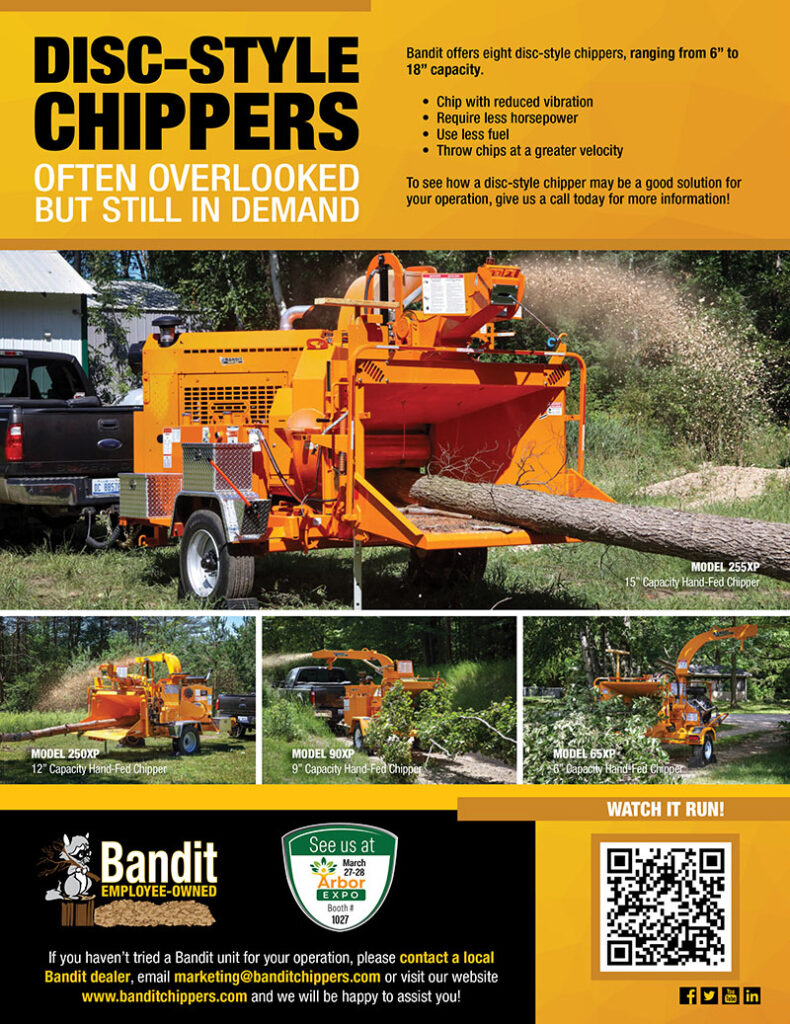
The only problem with buying used is that the market for used miniloaders is not particularly large. This is because these products haven’t been widespread in the U.S. market for much more than a decade. Buying new will give you access to more variety.
Final Thoughts
Miniloaders are transforming the tree care industry in the U.S., just as they have in Europe since the 1990s. Their small size, maneuverability, and wheel-based design have made them indispensable for arborists, especially in residential and commercial settings where space is limited and turf damage presents a significant liability.
Despite a price tag of up to $100,000, miniloaders are a solid investment for tree care companies, especially considering their long-term durability and high resale value.
When considering which miniloader might be the best match for your’ needs, look at a range of factors, from size to maintenance requirements to groundspeed.
But most of all, look for a machine that has proven itself powerful, maneuverable, and customizable enough for success in the rugged world of tree care.
Miniloaders for Tree Care
These manufacturers make the miniloaders that are most used by tree care professionals.
